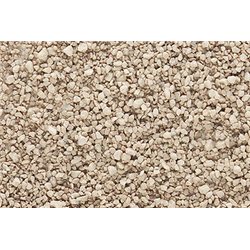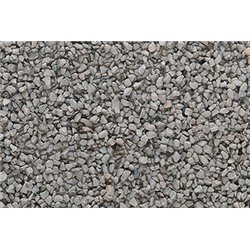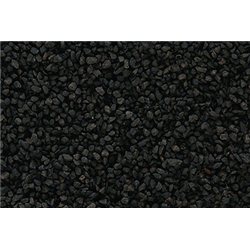Whether your DCC engine can run on an analogue layout depends on the decoder fitted to the engine. If the decoder is...
No products
Product successfully added to your shopping cart
There are 0 items in your cart. There is 1 item in your cart.
Search Tips
What is the purpose of ballast?
Ballast is an essential component in railway construction, serving several crucial functions in maintaining the integrity and performance of a railway track. In essence, it consists of crushed stone or similar granular material, typically spread along the railway track's foundation. Its primary purpose is to provide stability to the railway sleepers (or ties) and rails, ensuring that trains can operate safely and smoothly. By distributing the weight of trains across a wider area, ballast prevents the track from sinking into the ground, ensuring a more durable and resilient rail network.
One of the key roles of ballast is to facilitate proper drainage. Given the outdoor nature of railways, the tracks are exposed to rain and environmental moisture. Without effective drainage, water could pool on the tracks, leading to erosion, track movement or even rail buckling. The ballast’s coarse, permeable structure allows water to drain away from the rails and sleepers, preventing these potential hazards. This is particularly important in the UK, where wet weather is common, as maintaining a dry and stable foundation is vital for the longevity of the track.
Ballast also plays a critical role in preventing the growth of vegetation under and around the tracks. Left unchecked, weeds and plants can grow between the sleepers, destabilising the track and increasing the likelihood of derailments or maintenance issues. The sharp, angular nature of the ballast discourages plant growth by creating a hostile environment for roots, which is essential for reducing the need for manual weeding or herbicides on busy rail lines.
In addition to providing support and drainage, ballast also helps to dampen the vibrations caused by passing trains. These vibrations, if unchecked, could cause gradual damage to the track, the sleepers and the surrounding ground. By absorbing and dissipating these forces, ballast helps prolong the life of both the track and the underlying infrastructure. This vibration-dampening property is critical for maintaining the overall comfort of train travel, reducing noise and ensuring that the railway system remains operational over long periods with minimal need for major repairs.
Drawing a parallel with model railways, ballast serves a similar aesthetic and functional purpose, though on a smaller scale. In model railways, ballast is often used to replicate the appearance of real railway lines, creating a realistic, scenic representation of a functioning rail network. Much like its full-scale counterpart, model railway ballast helps to secure the track in place, though the forces it resists are much lighter. For instance, it ensures that the track remains stable on the model railway baseboard, especially in layouts where the track may be subject to vibrations or movements from nearby sources.
Though model railways do not need to worry about water drainage or weed growth, ballast still provides a realistic texture and enhances the visual quality of the layout. Many modellers carefully select ballast that mimics the scale and colour of real railway ballast, ensuring that their model closely resembles the real-life railways they are replicating. Properly applying ballast on a model railway can be a detailed process, involving gluing the material between and around the sleepers, which mimics the real-world process of laying ballast on a full-sized track.
In both real and model railways, ballast serves as an understated but vital component that ensures the overall stability, functionality, and appearance of the railway system. Without ballast, tracks would be far more prone to movement, instability, and wear, leading to frequent maintenance and safety issues. Whether maintaining the stability of a high-speed train line in the UK or adding a final touch to a detailed model layout, ballast remains an essential part of railway engineering and design.
Click here to receive the tips weekly in your mailbox. You can unsubscribe at any time.










